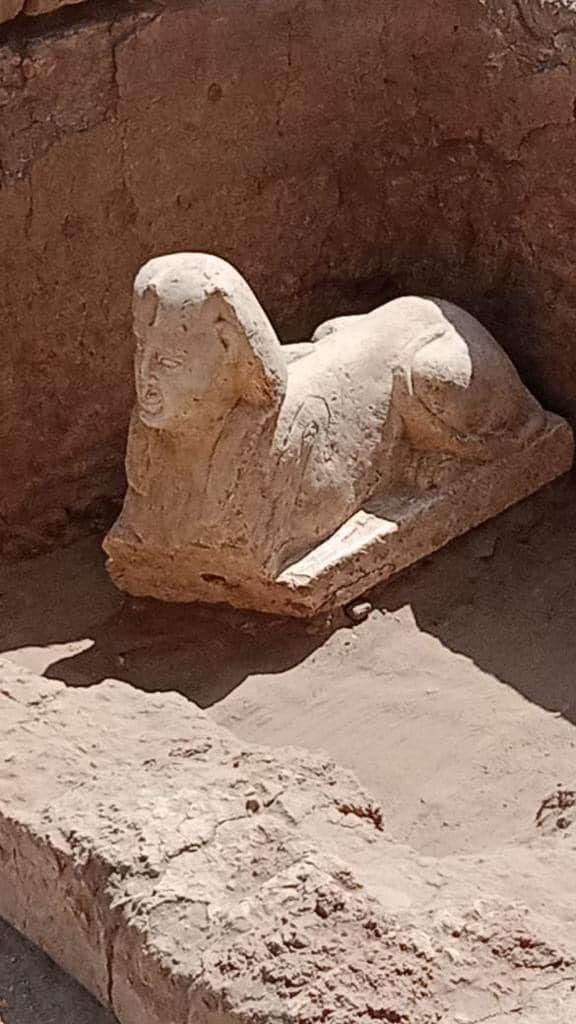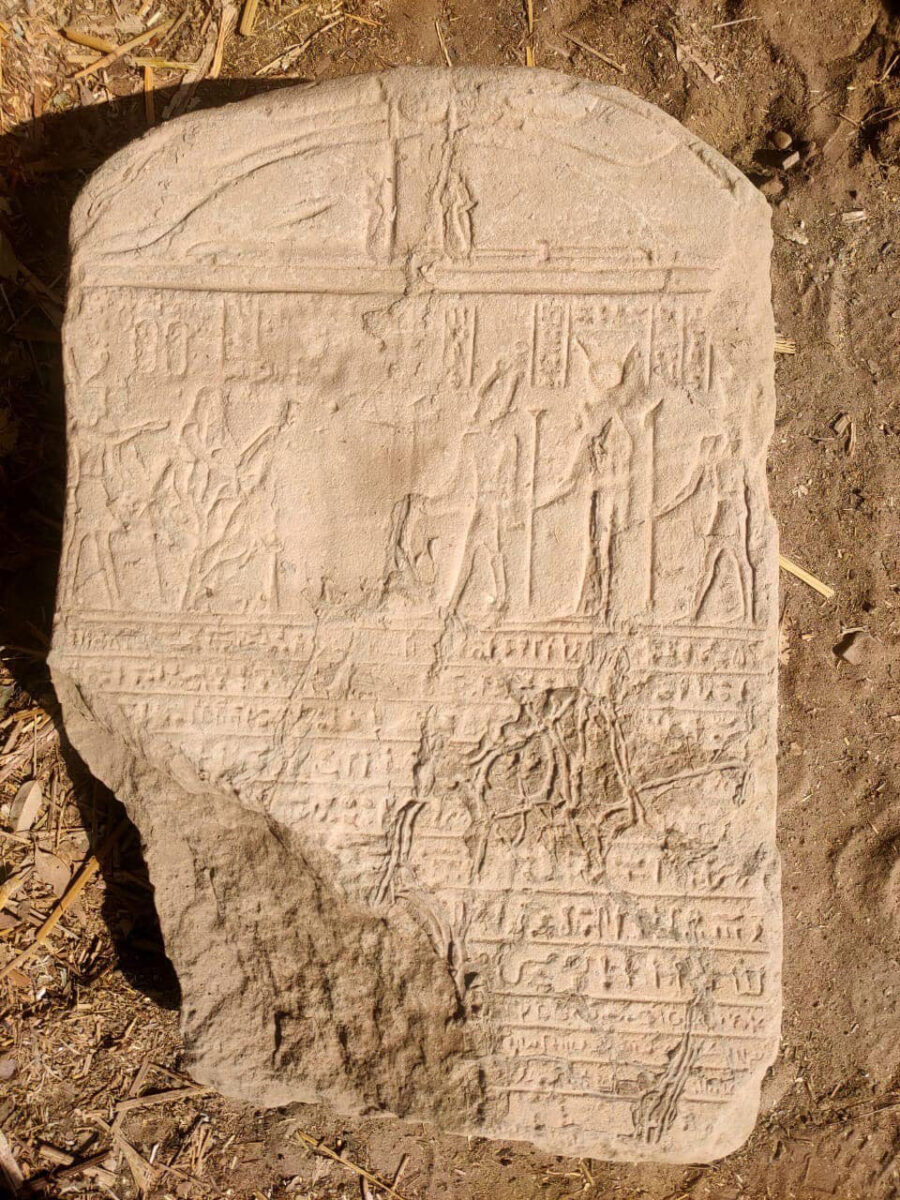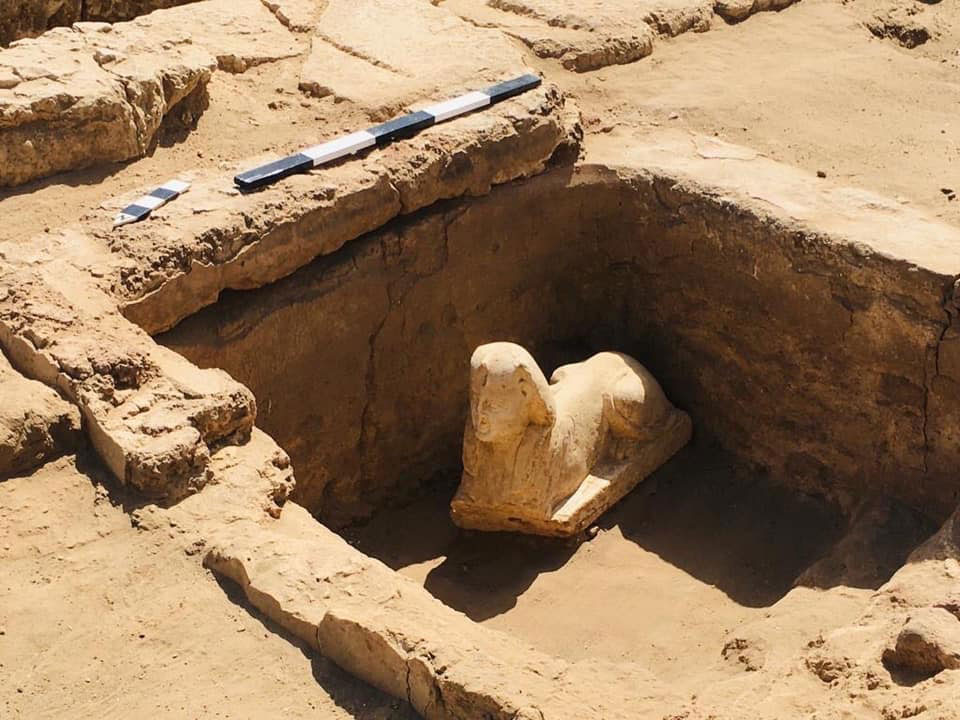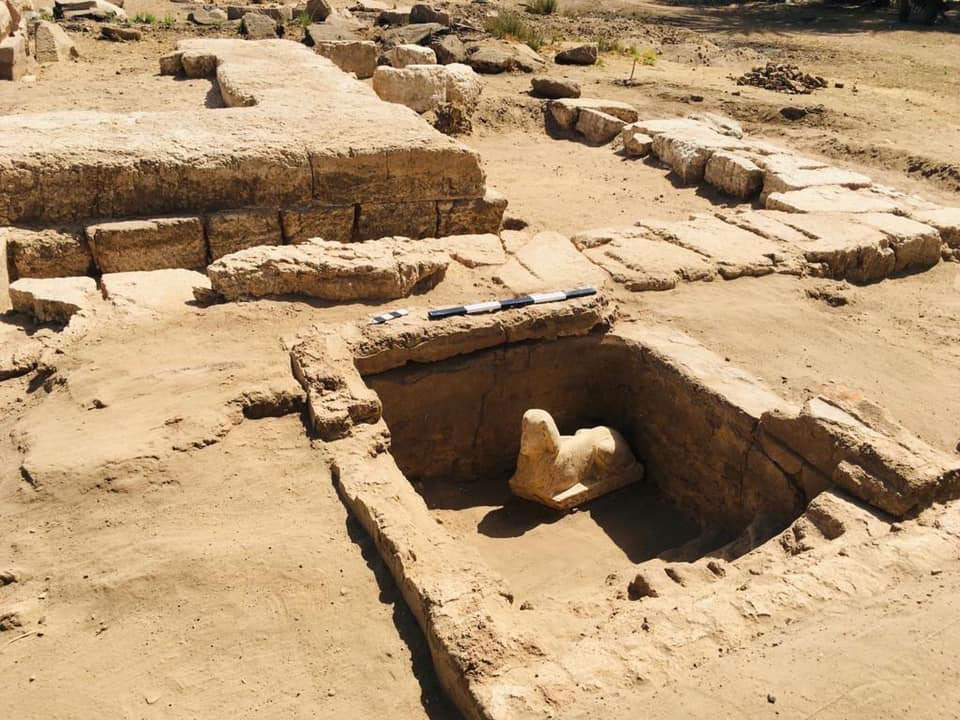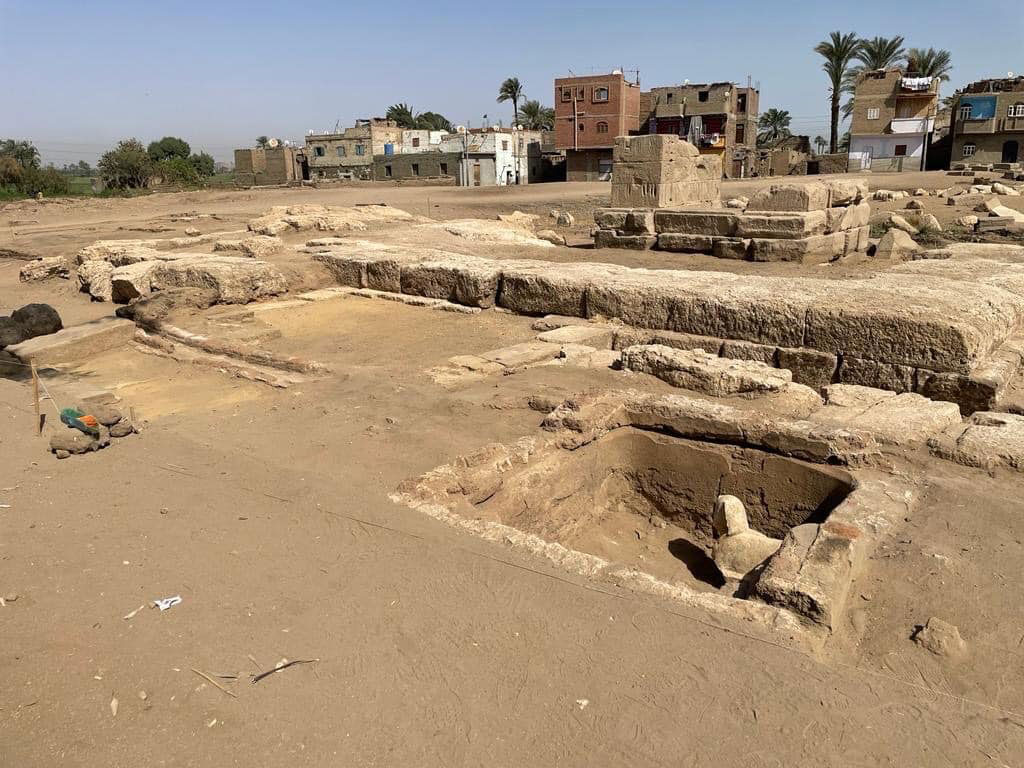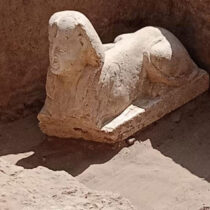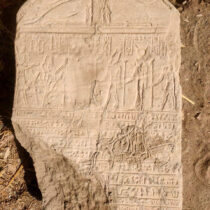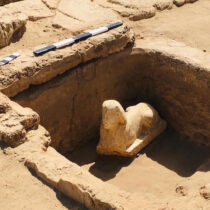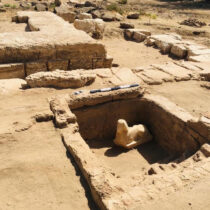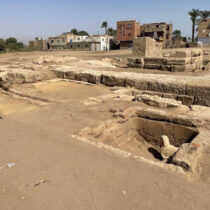The statue of a shpinx and the remains of a building dating to the time of the Roman Emperor Claudius have been found near the Temple of Dendera, in Egypt’s Qena Governorate.
According to a statement by Dr. Mostafa Waziri, Secretary General of the Supreme Council of Antiquities, the Egyptian archaeological mission from Ain Shams University, headed by Prof. Mamdouh El-Damaty (former Minister of Antiquities and Professor of Archeology at Ain Shams University), discovered the remains of a limestone building dating back to the Roman era, during excavations in the area east of the main temple (of Hathor), where a temple of Horus has been found.
Dr. Mamdouh El-Damaty explained that the remains of the building are a platform consisting of two levels with a foundation and sloping floors. Inside the building there is a water-storage basin made of red bricks covered with mortar, with stairs, dated to the Byzantine era.
He added that during the cleaning work of the basin, a limestone statue in the form of a sphinx was found, representing one of the Roman emperors. The sphinx wears a headdress known as the ‘nemes’, with a uraeus above his forehead. Primary examination of the statue’s facial features indicates that im might represent Emperor Claudius.
Dr. Mamdouh El-Damati described the statue as remakably beautiful. On its face, imperial features are depicted accurately, and a slight smile appears on its lips, which have two dimples on both ends. Remains of yellow and red pigment still survive. A Roman-era stela inscribed in hieroglyphs and demotic was also found below the statue.
The mission will continue the excavation work in the area of the Horus Temple, east of the Dendera Temple, and in front of the Isis Gate, to uncover the road linking them.
The mission begun excavation work in the middle of last February, as it carried out a radar survey of the Osirian halls in the Dendera Temple, and a magnetic and radio survey in the area east of the wall surrounding the temple in front of the Isis Gate. The work was supported by a team from the National Institute for Astronomical and Geophysical Research.
